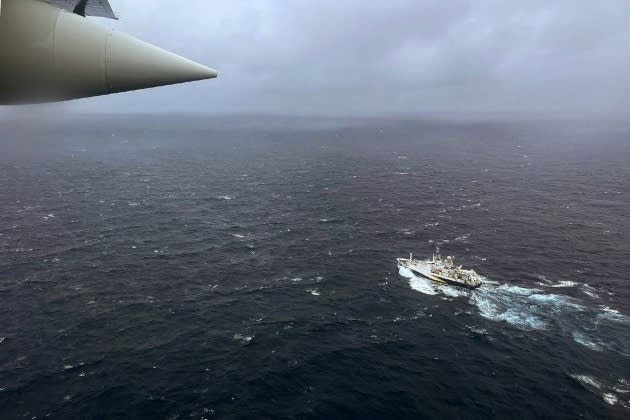Titan Crew Dead From ‘Catastrophic Implosion’

The Titan submersible implosion was heard by a top secret U.S. Navy acoustic detection system, officials told the Wall Street Journal. The system, designed to detect enemy submarines, first heard the sub implosion hours after the craft began its journey, per the report.
“The U.S. Navy conducted an analysis of acoustic data and detected an anomaly consistent with an implosion or explosion in the general vicinity of where the Titan submersible was operating when communications were lost,” a senior U.S. Navy official said in a statement to The Wall Street Journal. “While not definitive, this information was immediately shared with the Incident Commander to assist with the ongoing search and rescue mission.”
More from Rolling Stone
King Princess, Descendent of Couple Who Died on Titanic, Weighs in On Titan Sub Disaster
James Cameron 'Struck by the Similarity' Between Titan Disaster and Titanic Sinking
Officials Confirm 'Banging Noises' Continued in Search for Missing Sub
On Thursday, officials announced the missing Titan submersible imploded, killing the five people onboard, just 200 meters off the bow of the wreckage of the Titanic. At a press conference, U.S. Coast Guard Rear Admiral John Mauger said debris discovered earlier in the day by a remote-operated vehicle (ROV) on the seafloor was “consistent with a catastrophic implosion of the vessel.” Mauger said the families of the people onboard had been notified immediately.
The exact cause and timing of the implosion are still being investigated. The craft’s location was consistent, officials said, with its last communication to the surface on Sunday morning. Although the debris was found near the bow of the Titanic, officials did not believe the sub had collided with the wreckage, but rather imploded in the water column above the sea floor. The ROV found the Titan’s nose cone, the front and aft ends of the “pressure hull,” and two “debris fields,” one larger, one smaller, that are still being analyzed.
The Titan submersible disappeared Sunday morning when it lost contact with its support ship one hour and 45 minutes into a journey to explore the wreckage of the Titanic. The Titan was a 21-foot-long craft from the company OceanGate Expeditions. The “Cyclops-class” vehicle had a single porthole for observation, and was designed to take high-paying customers on deep-sea adventures.
On board were one pilot and four passengers. The pilot was OceanGate’s founder and CEO Stockton Rush, an aerospace engineer and jet pilot by training. The passengers were British aviation businessman Hamish Harding, retired French Navy commander and Titanic expert Paul-Henri Nargeolet, British-Pakistani businessman Shahzada Dawood, and his 19-year-old son, Suleman, the youngest person onboard.
Following the vessel’s disappearance, a massive search began. In the four days since the Titan dipped below the waves, planes, ships, and underwater rovers from the U.S., U.K., CAnada, and France have contributed resources. Searchers were racing against time to quickly gather equipment powerful enough to reach the depths of the ocean, since the craft reportedly had just 96 hours’ worth of oxygen available when it began its trip.
Officials declined to speculate about when exactly the implosion had occurred but said if it had occurred during the search, it would have caused a significant noise that their sonar would have picked up during the search. They said they believed the noises picked up in the water were not consistent with the location where the Titan was found.
Best of Rolling Stone
